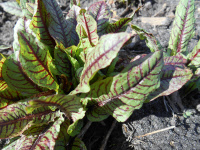Description
ARCHIVED
Note: This is a plant not currently for sale. This is an archive page preserved for informational use.
Grown for its ornamental green foliage embroidered with red veins.
ornamental green foliage embroidered with red veins
ARCHIVED
Note: This is a plant not currently for sale. This is an archive page preserved for informational use.
Grown for its ornamental green foliage embroidered with red veins.
ARCHIVED
Note: This is a plant not currently for sale. This is an archive page preserved for informational use.
Small gentian flowers with golden eyes, spring into fall.
Can not ship to: New Hampshire
Size: 9-12” x 12”
Care: sun to part shade in moist soil
Native: temperate areas world wide
“Myosotis” is Greek meaning mouse ear for the leaf shape. Around 1390 Henry IV adopted soveigne vous de moy, Forget-me-not, as a symbol not to forget his reign. A German legend attributes the common name to a lover who, gathering the flower, cried out “forget-me-not” as he fell into the river and died. Alfred Lord Tennyson wrote: “The sweet forget-me-nots; That grow for happy lovers.” Persian poet Shiraz told another folk tale: an angel fell from heaven by falling in love with a “daughter of earth,”when they sat by a river twining Forget-me-not flowers in her hair. The angel was not allowed to return until the lovers planted Forget-me-nots in every corner of the earth, which they did, hand in hand. She then became immortal “without tasting the bitterness of death” and joined the angel in Paradise.
ARCHIVED
Note: This is a plant not currently for sale. This is an archive page preserved for informational use.
Cheerful, small white daisies flower all summer and autumn.
Size: 18-24” x 12”
Care: Full sun moist well-drained soil
Native: Europe and Caucasus
Common name “Feverfew” speaks for itself, referring to the plant’s medicinal qualities. The species’ name parthenium comes from Plutarch who claimed that the plant saved the life of a construction worker who fell from the Parthenon. Feverfew was prescribed to remedy coughs, indigestion, congestion, melancholy, hysteria, vertigo, freckles, opium overdoses and for “them that are giddie in the head.” Parkinson. A favorite early cottage garden flower. Pressed specimen in Emily Dickinson’s herbarium.
ARCHIVED
Note: This is a plant not currently for sale. This is an archive page preserved for informational use.
Rose pink, with yellow above the lower lip, snapdragon-shaped blooms in spring and repeats in fall. Fuzzy, glaucous, silver-grey foliage. Excellent for places you want low-growing, drought tolerant flowers.
Size: 12” x 2’
Care: sun in well-drained soil
Native: Spain & Morocco
Wildlife Value: deer resistant, attracts hummingbirds
Described in 1852 in Pugillus Plantarum Novarum Africae Borealis Hispaniaeque Australis
ARCHIVED
Note: This is a plant not currently for sale. This is an archive page preserved for informational use.
Profuse golden yellow flowers from July through fall, slow to emerge in spring so don’t prematurely assume it’s gone. Very sweet yellow blooms over long period of time.
Size: 4-6”x 12-15”
Care: full sun in well-drained soil
Native: Colorado & Kansas south to SW U.S.
The name Zinnia honors German botany professor Johann Gottfried Zinn (1727-1759). This species 1st collected by Edwin James, physician and botanist on the Long Expedition in 1820.

